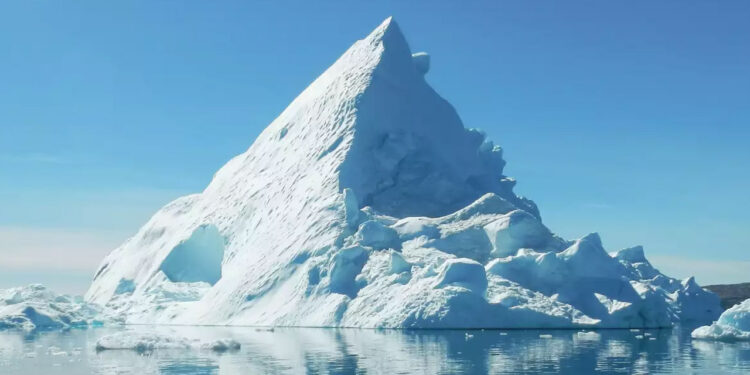The breathtaking spectacle of nature’s magnificence will captivate observers as they witness the world’s largest iceberg. The immense iceberg has initiated what may be its ultimate journey. A colossal mass twice the size of Greater London, this iceberg, known as A23a, has broken free after three decades, embarking on a grand and final expedition through the Antarctic seas. Born in 1986, A23a has spent the majority of its life anchored to the Antarctic Ocean floor. Now, as it drifts gradually between Elephant Island and the South Orkney Islands, its immense scale becomes apparent. Covering an expansive 4,000 square kilometers, this enormous iceberg is a frozen giant, reaching thicknesses of up to 400 meters in certain areas.
The remarkable sight greeted the ship as it neared the iceberg amidst snow and fog, as described by expedition leader Ian Strachan. The rugged edges, resembling musical notes, revealed intricate crevices and stunning blue arches sculpted by nature over time. During a scientific expedition to Antarctica last month, the UK’s RRS Sir David Attenborough encountered A23a, obstructing its path. Chief scientist Andrew Meijers recounted the enchanting encounter, where mist cleared, the sun appeared, and a group of orcas graced the scene. The ship spent six hours navigating past the iceberg, leaving a lasting memory of nature’s grandeur. As A23a slowly moves northward, Andrew Fleming of the British Antarctic Survey reassures that such icebergs are a natural occurrence. A23a’s trajectory, following that of its predecessors A68 and A76, leads it through the perilous “iceberg alley.”
Despite ongoing concerns about its effect on wildlife near South Georgia Island, experts anticipate that the iceberg will proceed on its path, eventually succumbing to its destiny – dissolving in warmer waters. As the massive iceberg approaches the conclusion of its icy voyage, scientists and spectators alike observe a brief wonder, serving as a reminder of the constantly shifting dynamics of our planet.







